|
The mid-1970s were a time of major transition in the SLR industry. The biggest changes involved the downsizing of camera bodies (initiated by Olympus), the general electrification and computerization of many functions (most notably with the Canon AE-1), and the inevitable de-contenting and cost-cutting that came with increased competition between all manufacturers for market share. Perhaps no series of SLRs demonstrated being caught in this no-man's land more than the first three models Pentax released with its brand-new K-mount bayonet in 1975. Two models would survive only two years, the third only five. Yet, ironically, the fourth model, introduced in 1976, would go on to be one of the most successful and iconic of all SLRs and would be in production for over 20 years. Fortunately for vintage camera lovers, any of these K-series SLRs can still be enjoyed and are serviceable even today. So let's take a look at the tragic trio of the KM, KX, K2, and the student camera extraordinaire, the K1000. Origins of the K-Series It does not take much of a look at a K-model, particularly a KM or K1000, to see that the Spotmatic (1964-77) bloodline runs deep. The prism housing is more angular, but the overall body profile and control layout hardly changed. Which also meant that most of the internals were likewise identical in form, if not composition. For the two higher-end models, the KX and K2, there were improvements in metering, viewfinder displays, a metal vertical-travel shutter for the K2, and new mirror-lock-up (MLU) & depth-of-field (DOF) preview controls. But the most notable change for all of the K-models was their namesake, the new bayonet-style "K" lens mount. This was a result of a brief period of collaboration with Zeiss in the early 1970s. Many people have wondered why Pentax even bothered with the K-Series when they debuted the compact M-series only a year later, in a clear response to both Olympus and Canon. A possible explanation lies in the fact that Pentax had been in a slow sales decline since 1968, and the greatest culprit was the antiquated M42 lens mount. While the other manufacturers had long before adopted modern, quick-action bayonet mounts, Pentax had hesitated to adopt one for its production cameras. It was not a matter of capability, for from the introduction of the SPOT-MATIC and Metalica prototypes in 1960 and continuing through 1966 with the Metalica II prototype, a bayonet mount was constantly present. Whatever the reasons for the delay, by 1973, with sales having fallen 40% from their 1967 peak, something had to be done. With pressure mounting, the fastest way to get the K-mount into production was to use the current Spotmatic F and ESII models with only the necessary changes for the new mount, while adding a couple of new features in the higher-end models. The K-Series would thus get the K-mount on the market and hopefully slow the bleeding while development of the M-Series continued. In other words, the Ks would be a temporary measure. But, oh what a measure! :-) Model-by-Model Profiles KM (1975)
KX (1975)
K2 (1975)
K1000 (1976)
K2DMD (1976)
Other Improvements over the K2:
Comparisons and Conclusion The K-bodies provide some interesting possibilities as far as the vintage SLR experience goes. If you are looking for the Spotmatic experience without the quirks of the screwmount, or fiddling with o-rings and batteries, the KM and K1000 are prime options. Dead-simple operation, metering, and proven reliability make them a great choice for beginners or anybody who wants to get back to the basic nuts and bolts of photography. K1000s have great appeal nostalgically for many people, but we would recommend a KM due to the inclusion of DOF preview and a self-timer. And they often sell for the same or less than K1000s, due to their relative obscurity. KMs generally range from $60 - 150 USD and K1000s occupy that same range but, inexplicably (except for sentimental reasons), will routinely sell for $200 - 250 USD. There is definitely no need to pay that much if you are considering one ;-). And go for an early production (Made in Japan or early Hong Kong) K1000, if you really want one. The KX is one of our all-time favorite SLRs here at 678. It has a great meter and viewfinder, a fully mechanical shutter, MLU, DOF preview, and self-timer. Shooting one back-to-back with a KM, you'll notice the better viewfinder, the more-precise match-needle metering, and the film winding is smoother, which fits with its higher slot in the lineup. If we could only have one K-Series body, this would be it! A KX is a rarer beast than a KM, but can often be found in excellent condition at the higher end of the same price range. They are definitely worth it in our estimation. Which finally brings us to the K2. The DMD version is definitely the most desirable of the two from a features/collectability standpoint. It was the absolute top-end Pentax until the debut of the LX in 1980. And it was priced accordingly ;-). Inflation-adjusted (2016) MSRPs for the body, data back, and motor drive are: $2,700.00, $1,900.00, and $1,368.00, respectively. That comes in just under $5,000 retail for the whole package (that makes that new K-1 seem like a pretty decent deal now, doesn't it? :-)). Needless to say, not a lot of DMDs (which came only in black) sold, making them rare birds then, and even rarer now. The standard K2 (black or chrome) sold for about $400 less. So, is a K2 in the cards for you? The biggest issue today is electronics, particularly circuit boards (common to all '70s electronic SLRs). Simply put, new replacements have long been unavailable if yours gives up. The only option is cannibalizing another body. If you have a working K2, shoot it 'til it dies (and it may not die for a long time ;-)). If you can get your hands on one that has been CLA'd (Cleaned, Lubed, Adjusted), that is preferable, as you'll know that it is working for sure. In operation, the K2's only real quirk (for many people, anyways) is its ASA dial. Its location (surrounding the lens mount) and operation (follow the technique in the manual, exactly!) can be off-putting for some. Standard K2s fall into the same price range as the other K-bodies, which, if you can find one in excellent working condition, makes them a pretty-decent deal considering their original pricing. The rarity of the DMD puts it into a completely different bracket. Excellent condition CLA'd examples will fetch upward of $400 USD sometimes. Although short-lived, the K-Series managed to stanch the sales decline of the previous seven years for Pentax in 1975. Sales nearly doubled for that year, and without the K-family, there would have been an eighth year of sales slippage. With the introduction of the M-Series in 1976, the K's days were numbered...except for the K1000. Its annual sales for the next 18 years would average 150,000 units. If you took photography in high school in North America in that era and beyond, 9 chances out of 10 the camera you found in your hand was the K1000. As for the rest of the Ks, they faded rather quickly from the public eye. But, in the hands of loyal Pentaxians, they just kept on clicking, often remaining a favored model even when newer, more complicated, more plasticky Pentaxes popped up. References: Pentax KM, KX, K2, K2DMD, & K1000 Manuals @ www.butkus.org The K Series 1975 - 97 @ http://www.pentax-slr.com/71760557 Pentax Manual Focus Film SLRs @ www. pentaxreviews.com Popular Science April 1977 @ https://books.google.ca/books Project SLR Production Numbers: (Asahi) Pentax @ www.knippsen.blogspot.ca
9 Comments
Peter Tabord
6/18/2021 11:36:19 am
I'm very fond of the M series, especially the MEF, one of which was my main camera from 1984 until 1998. But the K2 is a brilliant camera. If only it had a split image focus screen like the K2DMD.
Reply
C.J. Odenbach
6/18/2021 01:08:27 pm
Thanks for taking the time to comment, Peter. I agree 100% with your evaluation of balance with lenses and the differences between the M and K series bodies in regards to that. The Ms are OK up to an SMC-M 135mm for me, but like you say, a K is just more versatile when it comes to handholding longer lenses.
Reply
Jeff Davis
3/21/2022 05:50:55 pm
You can still have the viewing screens changed by most any competent camera repair person, I recommend getting a glass screen from an older Spotmatic model over a plastic screen from a late production K1000. I often have to replace the plastic screens with older glass ones because they get damaged so easily.
C.J. Odenbach
3/21/2022 05:59:31 pm
Thanks for the excellent tip, Jeff. It's good to know that a Spotmatic screen will also work in the K-bodies. Best regards.
Martin Pont
8/20/2023 02:24:21 pm
Hi Peter
Reply
Mikem
10/26/2022 06:56:53 am
Lobvely cameras, and despite claims to the contrary, based as close as possible on the internals of the Spotmatic F. Pentax would not expend real money on a stop-gap camera range with the M series coming down the track. I prefer the mechanical versions because of their inate reliablity, but I understand from a comment on teh pentax forums that the electronic components in the K-series electronic cameras are discrete and can therefore be swapped out for modern replacements if they fail. Despite repairing many Pentax cameras over the years I have not actaully had to do this, so cannot confirm if that is correct. However integrated circuits did not really come in until the M series cameras, so is highly likely.
Reply
C.J. Odenbach
10/26/2022 07:55:02 am
Thank you for commenting, Mikem. The Ks certainly have much more in common with the late Spotmatics than the Ms as far as construction is concerned. As with so many devices containing electronics produced from the 1960s to the mid-'70s, component availability is the major determinant of current repairability. Best regards.
Reply
Spooky
12/18/2022 07:47:05 pm
I inherited my mom’s KX and did not know how fortunate I was until I looked through my friend’s AE-1 viewfinder. My camera keeping me cognizant of my shutter speed and aperture helped me so much and continues to keep me focused. I didn’t know this wasn’t a standard feature. I’m in the digital video world professionally but my KX is my most treasured hobby. It being my mom’s def gives it that extra sentimental value but I can’t see myself ever wanting a different camera when this one is everything I’ve ever needed and (quite literally) nothing I don’t. Thank you for such a well-written look at the K-series history. I always love finding out more about where it came from :)
Reply
C.J. Odenbach
12/18/2022 08:28:25 pm
That's a great story, Spooky. Kudos to your mom for picking a great SLR! The KX is my personal favorite among the K-mount manual focus bodies. As you say, it has everything a photog needs. I have another, more tongue-in-cheek post about the KX specifically, but it is an affectionate one, nevertheless ;-). I hope you continue to enjoy your KX for years to come. Best regards.
Reply
Your comment will be posted after it is approved.
Leave a Reply. |
C.J. OdenbachSuffers from a quarter-century and counting film and manual focus SLR addiction. Has recently expanded into 1980's AF point and shoots, and (gack!) '90s SLRs. He even mixes in some digital. Definitely a sick man. Categories
All
Archives
June 2024
|
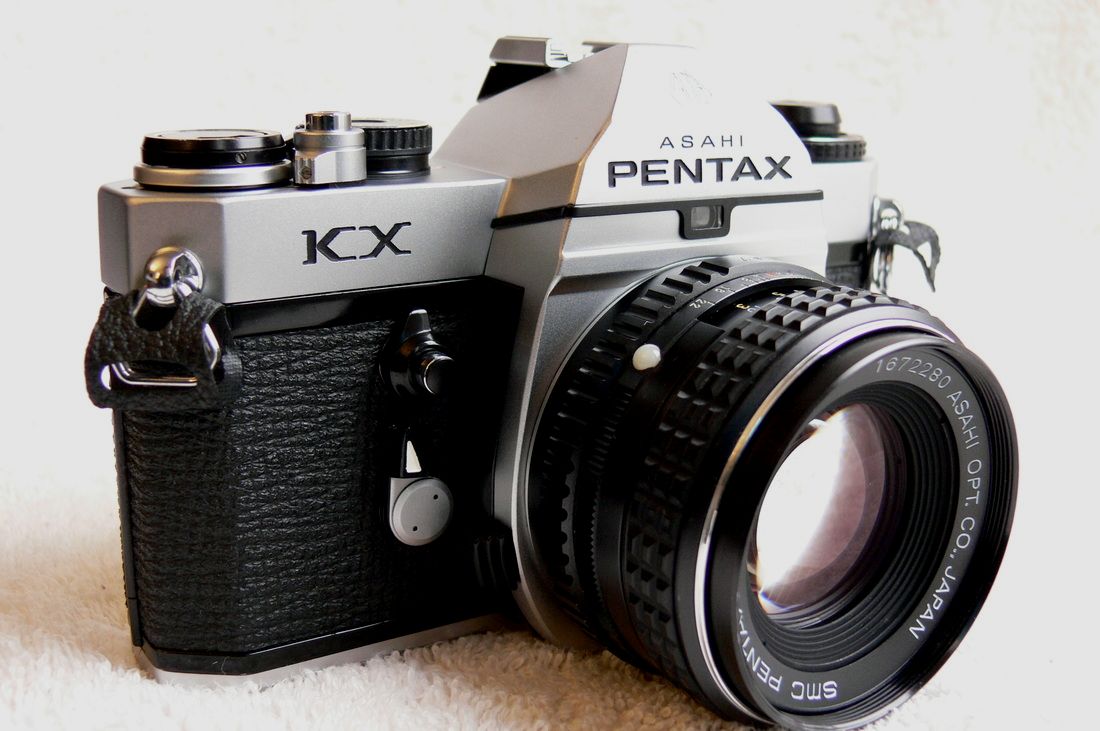
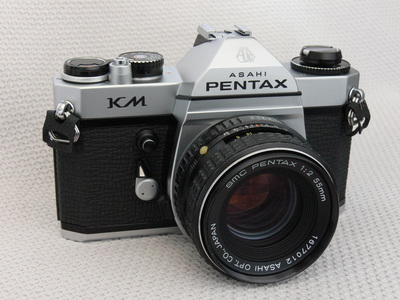
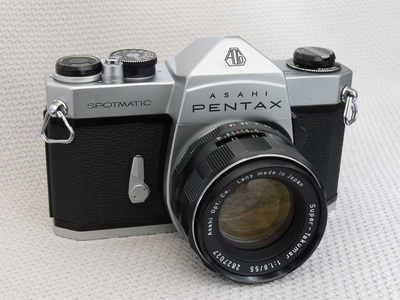
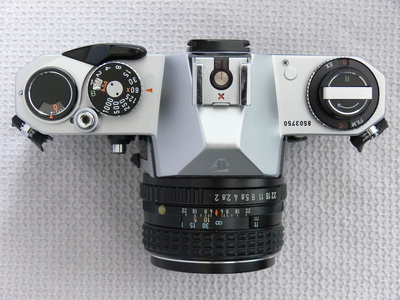
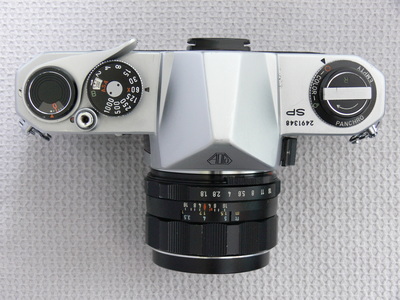
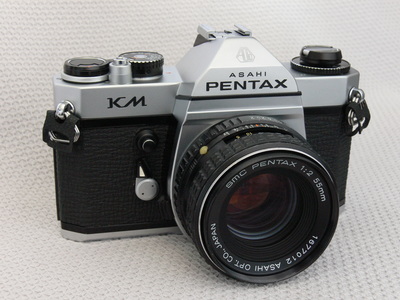
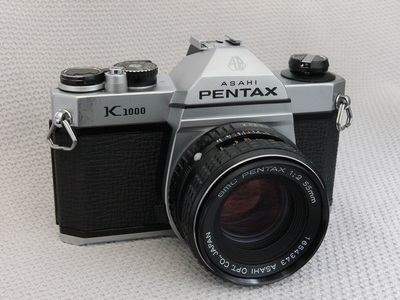
 RSS Feed
RSS Feed